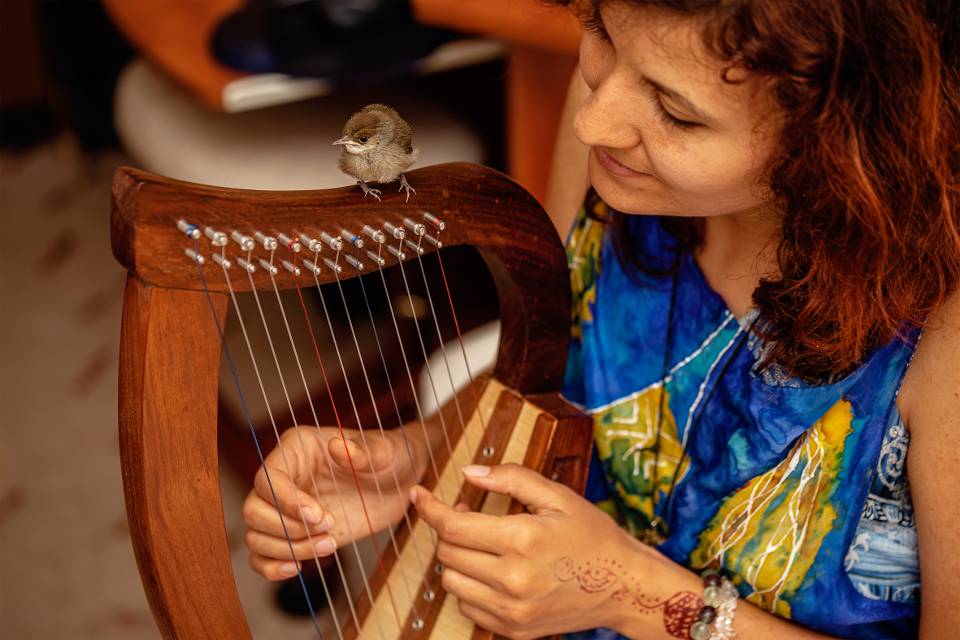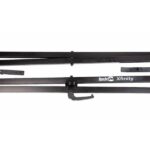Sextuplets, also known as sixteenth-note triplets, add variation and complexity to a musical piece.

This is usually seen in jazz and funk music. It makes your music sound intricate and interesting.
But playing six notes on one beat can be pretty tricky whether you are playing your guitar, drum, bass, or piano.
When learning to count sextuplets, just going ‘1-2-3-4-5-6’ is inefficient, especially if you have to go really fast.
Hence, we will be discussing what you can do, methods, and everything else you need to know.
Contents
Step-by-Step Guide to Counting Sextuplets
Whether you are experienced or a novice, counting sextuplets can be challenging.
Usually, there are four notes in a beat, but now that you have to make six notes fit in that space, you have to be a bit faster.
Sextuplets is a very versatile subdivision because you can divide a quarter note into six equal parts, an 8th note into three equal parts, or a triplet into two equal parts.
To learn how to count sextuplets without much hassle, do the following:
Establish a Steady Pulse
Get a general feel of the music. To feel the steady pulse of the music, you can tap your foot and bop your head to it. Whatever helps you go with the flow.
Divide the Beat into Six Equal Parts
Using the syllables present where the notes are found in your sheet music can make this easy. On the sheet, it is often represented by a number “6” above or below a group of six notes.
Each note must get the same duration. Spending too much time on one note can decrease the time for others.
Counting Methods
Counting is the most important skill you need. You can use either syllables or numbers and can formulate your own language for rhythm.
But if your creative powers are limited, or you just need to find something new because what you know isn’t working on a particular music piece, here are others you can try.
- Big – a – da – big – a – da, big a da big a da, big a da big a da, big a da big a da
- Bid – a – lee – did – a – lee, bid a lee did a lee, bid a lee did a lee, bid a lee did a lee
- 1 – trip – let – and – trip – let, 2 trip let and trip let, 3 trip let and trip let, 4 trip let and trip let
The third on the above list is the most common, alongside “1 – e – a -and – e – a.” But the first two can be even better because you can easily pick up the pace with them.
You can choose to adapt the first to Indian vocal percussion, switching it out with “Ta ki ta Ta ki ta” or “da ga da da ga da.”
Counting 1-2-3-4-5-6 seems easy but would only work at slower tempos. There is no way it would fit when you have to go faster.
To establish a strong connection between the sextuplet notes and the sounds they produce, you can emphasize the counting in the following ways:
See it as three little groupings of two or two little groupings of three, and that means you emphasize the eighth note within the sextuplet by counting 1 trip let and trip let, 2 trip let and trip let.
You can also choose to emphasize the triplet in the sextuplet by counting 1 trip let and trip let, 2 trip let and trip let.

The former draws attention to the individual eighth notes, while the latter highlights the grouping of three notes within each beat.
Here are some other counting methods found to be effective for others.
If any of the tongue twisters make you lose the numerical value of the beats, this would defeat the concept of counting written music altogether.
So, using something with numbers like “1 trip let and trip let” might be best.
Clapping or Tapping Exercises
You can do this to solidify your understanding of sextuplets. Start by setting a slower tempo and gradually increase the speed.
Focus on maintaining consistency and accuracy in your claps or taps. Ensure that each note within the sextuplet is clearly identified.
Applying Sextuplet Counting to Musical Notation
Practice, they say, makes perfect. So, take your newfound skills and apply them to actual musical notation.
Look for sextuplet symbols in sheet music —a number “6” placed above or below a group of six notes.
Sing or play the notes while counting them using your chosen method.
Try to start with simple melodies before progressing to more complex compositions. Challenge yourself to make it a part of you until you can execute sextuplets with precision.
Learning How to Count Sextuplets – Likely Challenges and Fixes
Consistency and Accuracy
Focus on maintaining consistent timing and accurate counting throughout, even if this proves difficult at first. Practice slowly, then gradually increase the tempo.
Ensure that you can confidently execute sextuplets without sacrificing precision.
Syncing with Other Parts or Instruments

Music is often a collaborative endeavor, and playing or singing sextuplets in sync with other parts or instruments is essential.
Listen attentively to the ensemble and strive to blend your sextuplet rhythm seamlessly with others.
Practice together, communicate, and adjust as necessary to achieve a unified and harmonious performance.
Utilizing Metronome or Backing Track
Incorporate the use of a metronome or backing track to enhance your sense of timing.
This will also provide a consistent rhythmic reference. These tools can help you develop a solid internal pulse and ensure that your sextuplets align with the overall musical structure.
Gradual Progression and Patience
Rome wasn’t built in a day, and mastering sextuplets requires patience and persistence.
Begin by practicing at a comfortable tempo and gradually increase the speed as your confidence grows. Embrace the process, celebrate small victories, and consistently practice.
As with every skill, mastery comes with time and experience. So, you must be patient with yourself, experienced and novice alike.
Wrap Up
So far, we’ve seen the best ways to count sextuplets.
You can see it as three little groupings of two or two little groupings of three. You must also use a counting method that easily rolls off your tongue.
That way, you can maintain it as you feel the pulse of the music.
Understanding the basic concepts, employing effective counting methods, and practicing diligently, will equip you with the tools necessary to navigate this fascinating aspect of music.
Embrace the beauty of rhythm and keep the sextuplet flame burning brightly in your musical endeavors!






